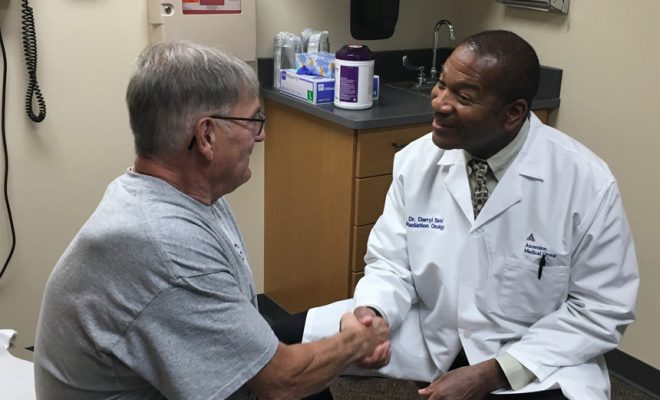Early detection of prostate cancer provides options: Rhinelander man tells his story

Prostate cancer is the second leading cause of cancer among men, according to the Centers for Disease Control and Prevention. But prostate cancer is often slow to grow and spread. For this reason and because of early detection, prostate cancer has one of the highest survival rates of any type of cancer.
According to the American Cancer Society (ACS), the most common screening tool for prostate cancer is the prostate-specific antigen (PSA) test. This blood test measures the presence of PSA circulating in the bloodstream and is usually the first step in any prostate cancer diagnosis.
For 77-year old Roger Marquardt of Rhinelander, early detection of his prostate cancer came as the result of his management of other health problems.
“Given my issues, I had been having a PSA test every six months,” Marquardt said. “A significant jump in my numbers from one test to the next led to further testing to confirm that I had prostate cancer.”
That result introduced him to Dr. Daryl Barton, a radiation oncologist with Radiation Oncology Specialists on staff at the James Beck Cancer Center at Ascension St. Mary’s Hospital in Rhinelander.
One of the benefits of early detection is it allows us to consider all of the options for effective treatment,” said Barton. “In Roger’s case we determined an aggressive plan of 40 radiation treatments over two months was the best course of action.
That treatment plan sends Marquardt to the cancer center several times a week.
“It’s a relief to be able to get this level of care close to where I live,” said Marquardt. “The convenience and time required allow me to keep doing the things I enjoy which means time outdoors hunting and fishing.”
This year, an estimated 175,000 men in the United States will be diagnosed with prostate cancer and more than 31,000 will die from the disease, according to ACS statistics. Many men with prostate cancer never experience symptoms and, without screening, would never know they had the disease.
Statistics show the chance of having prostate cancer rises rapidly after age 50 and more than half of prostate cancer cases are found in men older than 65. Risk factors for developing the disease include having a father or brother with prostate cancer and/or having a diet that includes a lot of red meat or high-fat dairy products.
Prostate cancer occurs more often in African-American me and in Caribbean men of African ancestry than in men of other races.
Marquardt says another key factor in the success of his treatment is the open and honest relationship he has enjoyed with his providers. “It’s important to listen and trust the experts,” he said.
With communication and trust combined with his positive attitude and sense of humor, Marquardt said he hopes to live to 100 and looks forward to beginning his next adventure, a European cruise with his wife.
For more information, visit ascension.org/wisconsin.
Leave a reply
You must be logged in to post a comment.


